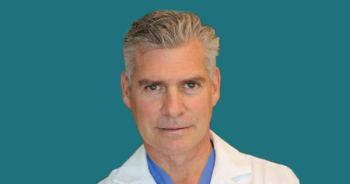
2023 World Sickle Cell Day: The Home Stretch for Gene Therapy in SCD?
More work remains to be done to improve accessibility to populations and countries that have the highest unmet need with SCD treatment.
On this year’s World Sickle Cell Day, gene and cell therapies for treating
While disease-modifying therapies are available to patients with SCD, these represent a lifelong cost and treatment burden of standard of care (SOC) therapies, which includes supportive care, hydroxyurea, and blood transfusions in some patients. Gene and cell therapies represent a 1-time, potentially curative mode of treatment for these patients.
The closest gene therapy to market for treating SCD is Vertex Pharmaceuticals’ exagamglogene autotemcel (exa-cel), the biologics license applications (BLA) for which the FDA recently accepted for the indications of SCD and transfusion-dependent β-thalassemia (TDT). For SCD, FDA granted Priority Review with a Prescription Drug User Fee Act (PDUFA) target action date of December 8, 2023.1 “SCD is a serious and lifelong inherited blood disease, characterized by unpredictable, and debilitating pain crises called VOCs, which can result in organ damage. People with SCD have a higher mortality rate than the general population and, despite improvements in the standard of care, that has not changed over time,” a spokesperson from Vertex told CGTLive.“ There is a significant unmet need for new transformative therapies in SCD that adequately address the challenges of living with this disease.
The FDA
WATCH NOW:
“We deliberately chose CRISPR/Cas9 gene editing as our approach specifically because of its ability to deliver precise, permanent edits at a single desired location, without evidence of off-target effects. And we are very pleased with the strength of our data for exa-cel – efficacy, safety and durability of response – and we believe the data presented at EHA established a differentiated profile in SCD,” Vertex said.
Right behind exa-cel is bluebird bio’s lovotibeglogene autotemcel (lovo-cel), the BLA for which was submitted in April 2023.3 The BLA submission and request for priority review is based on data from 36 patientsin the ongoing phase 1/2 HGB-206 clinical trial (NCT02140554), the most recent data from which showed that 96% of patients treated in Group C experienced complete resolution of severe VOcs through 24 months of follow-up. Serious AEs related to lovo-cel included a case of grade 2 febrile neutropenia and 2 cases of development of persistent, non-transfusion-dependent anemia in pediatric patients; the latter AE prompted a clinical hold by the FDA in late 2021. Other deaths previously occurred that were not related to the gene therapy but possibly related to myeloablative conditioning.4
“It is indeed a very exciting time for the field of sickle cell disease. We are looking forward to not just 1 but 2 potential gene therapy approvals this year. These autologous therapies are surely going to remove a lot of barriers and allow many more patients to pursue them,” Akshay Sharma, MBBS, assistant member, bone marrow transplant department, St. Jude Children’s Research Hospital, told CGTLive.
Last month, an
After reviewing the data available from the pivotal studies, ICER rated lovo-cel with a B+, stating that it provides at least an incremental net benefit compared with SOC and may provide a substantial net health benefit. ICER rated exa-cel with a C++, lower than lovo-cel given the smaller sample size and uncertainty with the newer CRISPR editing technique compared to lentiviral gene therapy, stating that compared with SOC, treatment with exa-cel may be comparable, result in incremental net benefit, or result in substantial net benefit. ICER also noted that there is insufficient evidence to compare the 2 gene therapies to each other.
While the field is closer than ever to an approval, much more work needs to be done to reduce cost and improve accessibility, especially considering that countries with the highest rates of SCD are in Africa.
"The elephant in the room – the cost barrier – needs to be addressed first. These therapies, costing millions of dollars, are going to be out of the reach of most Americans, let alone people in Africa, India and South America who need these treatments the most. We must advocate for equitable access to these novel therapies if we truly want to address sickle cell disease,” Sharma said.
REFERENCES
1. FDA accepts Biologics License Applications for exagamglogeneautotemcel (exa-cel) for severe sickle cell disease and transfusion-dependent Beta thalassemia. News release. Vertex Pharmaceuticals. June 8, 2023. Accessed June 19, 2023.https://investors.vrtx.com/news-releases/news-release-details/fda-accepts-biologics-license-applications-exagamglogene
2. Positive Results From Pivotal Trials of exa-cel for Transfusion-Dependent Beta Thalassemia and Severe Sickle Cell Disease Presented at the 2023 Annual European Hematology Association (EHA) Congress. News release. Vertex Pharmaceuticals. June 9, 2023. Accessed June 19, 2023. https://investors.vrtx.com/news-releases/news-release-details/positive-results-pivotal-trials-exa-cel-transfusion-dependent
3. bluebird bio Submits Biologics License Application (BLA) to FDA for lovotibeglogeneautotemcel (lovo-cel) for Patients with Sickle Cell Disease (SCD) 12 years and Older with a History of Vaso-Occlusive Events. News release. bluebird bio, Inc. April 24, 2023. Accessed June 19, 2023. https://investor.bluebirdbio.com/news-releases/news-release-details/bluebird-bio-submits-biologics-license-application-bla-fda-0
4. Walters MC, Thompson AA, Kwiatkowski JL, et al. Lovo-cel (bb1111) Gene Therapy for Sickle Cell Disease: Updated Clinical Results and Investigations into Two Cases of Anemia from Group C of the Phase 1/2 HGB-206 Study. Presented at: ASH 2022 Annual Meeting. December 10-12, 2022; New Orleans, LA. Abstract 11.
5. Gene therapies for sickle cell disease. Draft Evidence Report. ICER. April 12, 2023. Accessed June 19, 2023. https://icer.org/wp-content/uploads/2023/04/SCD_FOR-PUBLICATION.pdf
Newsletter
Stay at the forefront of cutting-edge science with CGT—your direct line to expert insights, breakthrough data, and real-time coverage of the latest advancements in cell and gene therapy.












































